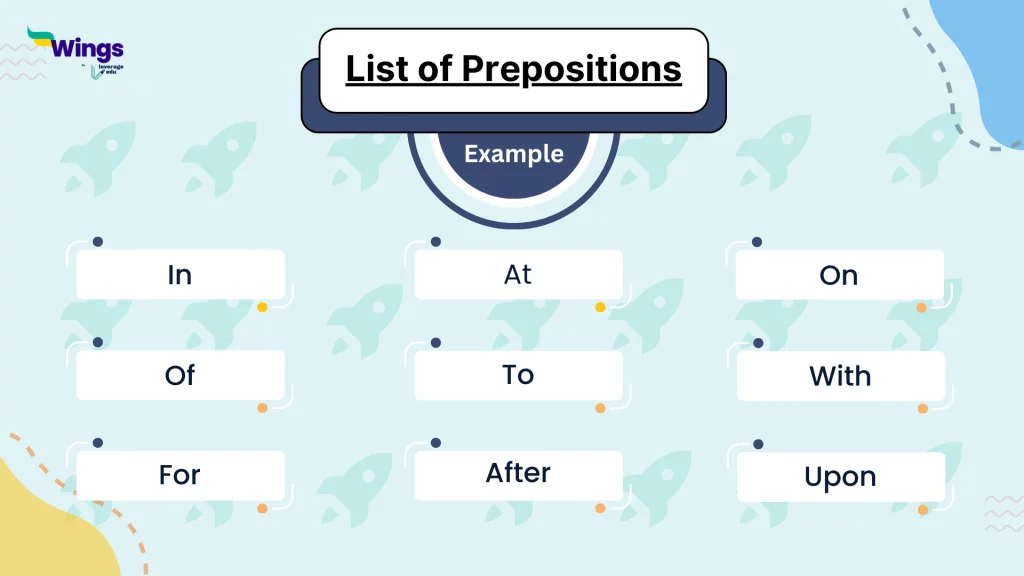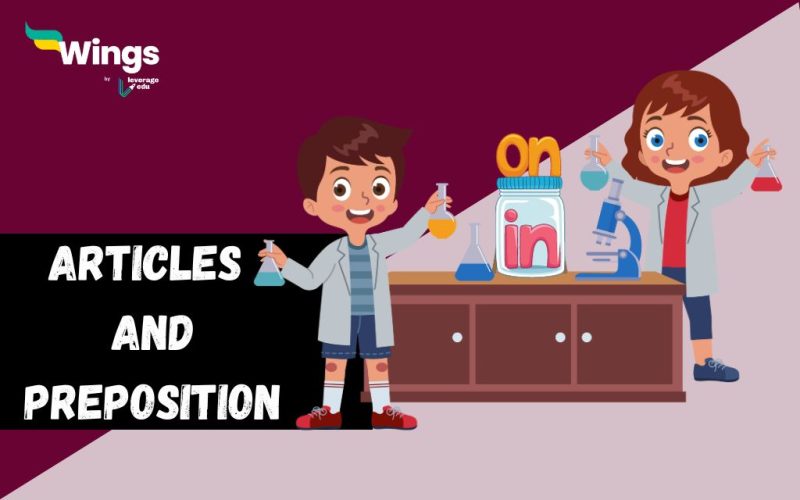Articles and Preposition: Language, as a complex system of communication, relies heavily on its building blocks. Among these, articles and prepositions play a pivotal role in shaping the structure and meaning of sentences. By mastering their usage, learners can enhance their ability to express ideas with precision. They can even convey complex relationships within sentences.
Therefore, in this blog article, we will explore the significance of articles and prepositions in the English language, their distinct functions, and examples to elucidate their usage and differences.
This Blog Includes:
What are Articles?
Articles are words such as ‘a, an, and the‘ which are used to qualify nouns that it is specific or non-specific. There are two types of articles Definite and Indefinite Articles.
Definite Articles
Definite articles are often termed unique articles indicating that the following article is specific. It also defines the sense of familiarity with the noun used. For eg . I bought a book. The book was very interesting. So here the article defines both the specificity and the familiarity with the book.
Indefinite Articles
“A” and “an” are indefinite articles used when referring to non-specific or newly introduced nouns. “A” is used before nouns starting with a consonant sound, while “an” is used before nouns starting with a vowel sound. For example, “a cat” with the consonant sound K, and “an apple” is used with the vowel sound a.
Must Read: 10 Article Rules with Examples: A Complete Guide
What are Prepositions?
Prepositions are words that show the relationship of the noun or pronoun with other nouns or pronouns or with other words in the sentence. For example, She sat at the table. In this sentence, the preposition at shows the relationship of the pronoun she with the noun table.

8 Types of Prepositions and Examples
There are 8 Types of Prepositions you would find on a usual basis in different readings.
Prepositions of Place
Examples: in, on, at, under, over, between, beside, among
Usage: Indicates the location or position of an object or person to another.
Example: The cat is on the table. The book is between the two shelves.

Prepositions of Time
Examples: at, in, on, before, after, during, since, until
Usage: Indicates when an action takes place or the duration of an event.
Example: I will meet you at the restaurant at 7 PM. We will have the meeting during the afternoon.

Prepositions of Direction or Movement
Examples: to, from, into, onto, through, across, along, towards
Usage: Describes the direction or movement of an action.
Example: She walked into the room. The river flows through the valley.

Prepositions of Agent or Instrument
Examples: by, with
Usage: Indicates the means or agent by which an action is performed.
Example: The letter was written by Mary. He fixed the car with a wrench.

Prepositions of Purpose or Reason
Examples: for, because of, due to, to
Usage: Expresses the reason or purpose behind an action.
Example: She went to the store for groceries. He was late due to heavy traffic.

Prepositions of Possession
Examples: of, ‘s
Usage: Shows ownership or possession.
Example: The colour of the car is red. John is a friend of Mary’s.

Prepositions of Condition or Comparison
Examples: like, unlike, as, than
Usage: Compares two things or describes a condition.
Example: She is taller than her brother. The weather is not like it was yesterday.

Compound Prepositions
Examples: in front of, despite, by means of, out of
Usage: Combinations of words that function as single prepositions.
Example: The cat is in front of the door. He succeeded in spite of the challenges.
Read this exciting blog on Nouns
Difference Between Articles and Prepositions
Now that we know what articles and prepositions are. It is time we understand the difference between the two. To give you a better understand, here is a table which will give you a better understanding of the same.
| Aspect | Articles | Prepositions |
| Definition | Articles are words that define a noun as specific or unspecific. | Prepositions are words that show the relationship between a noun (or pronoun) and other words in a sentence. |
| Types | Definite (the) and indefinite (a, an) | Spatial (in, on, under), Temporal (at, before, after), Directional (to, from, through), Agent/Instrument (by, with), Purpose/Reason (for, because of), Possession (of, ‘s), Condition/Comparison (like, than), Compound (in front of, in spite of) |
| Function | Specifies whether a noun is specific or general. | Indicates the relationship, position, direction, time, or purpose of a noun in a sentence. |
| Examples | Definite Article: “I saw the cat.” Indefinite Article: “I have a cat.” | Spatial Preposition: “She is in the room.” Temporal Preposition: “We will meet at the park.” – Directional Preposition: “He walked to the store.” |
| Placement in a Sentence | Generally comes before a noun. | Typically comes before a noun and links it to other elements in the sentence. |
| Impact on Meaning | Adds specificity to the noun it modifies. | Establishes relationships and provides context for the noun it precedes. |
Explore this blog: Abstract Nouns: Definition, Examples and Usage
Articles and Preposition Exercises Download PDF
Check Out Other Important Topics in English
FAQs
Articles are used before nouns to highlight whether they are singular or plural. For eg a, an, and the. Prepositions are used to show the relationship between the nouns/pronouns with other nouns/pronouns or other words in the sentence. For eg at, on, in, under etc.
The cat is on the roof.
The keys are in the drawer.
The children are playing between the trees.
I have a cat at home.
She wants to buy an apple from the market.
We visited the museum last week.
The seven essential rules of using articles (a, an, the) in English are:
1. Use “A” before singular, countable nouns that begin with a consonant sound.
Example: I saw a cat in the garden.
2. Use “An” before singular, countable nouns that begin with a vowel sound (a, e, i, o, u).
Example: She is an engineer.
Note: The sound matters more than the letter. An hour (silent ‘h’) but A university (pronounced ‘yu-niversity’).
3. Use “The” when referring to something specific or already known to the listener/reader.
Example: The book on the table is mine.
4. Do not use an article with uncountable nouns when speaking in general.
Example: Water is essential for life. (Not The water is essential for life unless referring to specific water.)
5. Use “The” with unique things or when there is only one of something.
Example: The sun is shining brightly.
Example: She visited the Eiffel Tower.
6. Do not use an article with proper nouns (names of people, countries, cities, etc.), except for exceptions like “The USA,” “The Netherlands,” or “The Himalayas.”
Example: I live in India. (Not The India)
Example: He traveled to the United States.
7. Use “The” with superlative adjectives and ordinal numbers.
Example: She is the best player in the team.
Example: This is the first time I am visiting Paris.
A simple preposition is a one-word preposition that shows the relationship between nouns or pronouns and other words in a sentence. These prepositions are usually short and commonly used.
Use “A” and “An” for singular, countable, non-specific nouns (a cat, an apple). Use “The” for specific or known things, unique items (the sun, the Taj Mahal), superlatives (the best), and certain places (the USA, the Ganges). No articles for general uncountable or proper nouns (Water is essential).
This was all about the Articles and Prepositions. To advance your grammar knowledge and read more informative blogs, check out the Learn English page of Leverage Edu.
 One app for all your study abroad needs
One app for all your study abroad needs















 60,000+ students trusted us with their dreams. Take the first step today!
60,000+ students trusted us with their dreams. Take the first step today!

